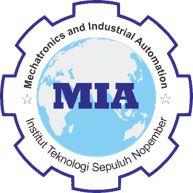Agent-Based Simulation Disaster Evacuation Awareness on Night Situation in Aceh
Abstract
In 2004 at least 230,000 people were victims of the Aceh tsunami disaster. To prevent the recurrence of many victims, the Aceh government held an evacuation exercise in 2008. To improve effectiveness dan reduce the cost reduction during evacuations drills, simulation is the best option. Agent-Based Modeling is a simulation program that was employed for tsunami evacuation in Aceh. This study on tsunami evacuation using agent-based modelling presented and evaluated the different control parameters that affect the evacuation rate. Evacuation scenario during day or night has different environmental, agent base, road modelling, and population approach. The Road Network Model has explained that to analyze the effect of agents in the evacuation process, resident agents are presumed to know the direction and shortest path to the nearest evacuation points. This simulation designed in Netlogo is also able to assess the congestion possibility on the road network. The road network emphasized the different scenarios to discover the possibility of congestion points. Nighttime is proven to be the best scenario for performing the evacuation in the simulation. The key reason to select the night scenario is to maximize the effects of an evaluation of the road network. In addition, simulation using night scenarios is also expected to raise people’s awareness.
Keywords
Full Text:
PDFReferences
E. Krausmann and A. M. Cruz, “Impact of the 11 March 2011, Great East Japan earthquake and tsunami on the chemical industry,” Nat. hazards, vol. 67, no. 2, pp. 811–828, 2013.
F. Imamura, T. Suzuki, and M. Taniguchi, “Development of a simulation method for the evacuation from the tsunami and its application to Aonae, Okushiri Is., Hokkaido,” J. Japan Soc. Nat. Disaster Sci., vol. 20, no. 2, pp. 183–195, 2001.
M. Affan, Y. Goto, and A. Sabti, “Tsunami evacuation simulation for disaster awareness education and mitigation planning of Banda Aceh,” 2012.
L. Chang, F. Peng, Y. Ouyang, A. S. Elnashai, and B. F. Spencer Jr, “Bridge seismic retrofit program planning to maximize postearthquake transportation network capacity,” J. Infrastruct. Syst., vol. 18, no. 2, pp. 75–88, 2012.
Marilene B. Montemayor, “Indonesia - Disaster Resilience Initiatives Project (IDRIP),” 2019. https://www.worldbank.org/en/news/loans-credits/2019/11/27/indonesia-disaster-resilience-initiatives-project-idrip.
C. M. Macal and M. J. North, “Tutorial on agent-based modeling and simulation,” in Proceedings of the Winter Simulation Conference, 2005., 2005, pp. 14-pp.
S. Tisue and U. Wilensky, “Center for Connected Learning and Computer-Based Modeling Northwestern University, Evanston, Illinois,” in NetLogo: A Simple Environment for Modeling Complexity, Citeseer, 1999.
E. Mas, F. Imamura, and S. Koshimura, “Modeling the decision of evacuation from tsunami, based on human risk perception,” 2011.
E. Mas, A. Suppasri, F. Imamura, and S. Koshimura, “Agent-based simulation of the 2011 great east japan earthquake/tsunami evacuation: An integrated model of tsunami inundation and evacuation,” J. Nat. Disaster Sci., vol. 34, no. 1, pp. 41–57, 2012.
E. Mas, F. Imamura, and S. Koshimura, “An agent based model for the tsunami evacuation simulation. A case study of the 2011 great east Japan tsunami in Arahama town,” 2012.
Badan Pusat Statistik Kota Banda Aceh, “Kecamatan Meuraxa Dalam Angka 2018,” Banda Aceh, 2018. Accessed: Mar. 21, 2022. [Online]. Available: https://bandaacehkota.bps.go.id/publication/2018/09/26/8fa8afdc3aef05bc19609177/kecamatan-meuraxa-dalam-angka-2018.html.
C. H. Fadhila, K. Murtilaksono, and K. Munibah, “Arahan pemenuhan ruang terbuka hijau kota banda aceh,” TATALOKA, vol. 21, no. 1, pp. 180–191, 2019.
H. Kanamori, “Lessons from the 2004 Sumatra–Andaman earthquake,” Philos. Trans. R. Soc. A Math. Phys. Eng. Sci., vol. 364, no. 1845, pp. 1927–1945, 2006.
M. Munirwansyah, H. Munirwan, M. Irsyam, and R. P. Munirwan, “Escape hill development as a strategy to improve urban safety after earthquake and tsunami Aceh 2004 based on regional planning and geotechnical aspect,” in Journal of Physics: Conference Series, 2020, vol. 1572, no. 1, p. 12030.
J. W. McCaughey, I. Mundir, P. Daly, S. Mahdi, and A. Patt, “Trust and distrust of tsunami vertical evacuation buildings: Extending protection motivation theory to examine choices under social influence,” Int. J. disaster risk Reduct., vol. 24, pp. 462–473, 2017.
H. Reddy, “PATH FINDING-Dijkstra’s and A* Algorithm’s,” Int. J. IT Eng., pp. 1–15, 2013.
M. Di Mauro, K. Megawati, V. Cedillos, and B. Tucker, “Tsunami risk reduction for densely populated Southeast Asian cities: analysis of vehicular and pedestrian evacuation for the city of Padang, Indonesia, and assessment of interventions,” Nat. hazards, vol. 68, no. 2, pp. 373–404, 2013.
“Kamakura City Office, Tsunami Evacuation Plan for Kamakura City, 2015.” https://www.city.kamakura.kanagawa.jp/sougoubousai/documents/01-1tunamikeikaku.pdf (accessed Mar. 21, 2022).
DOI: http://dx.doi.org/10.12962%2Fj23378557.v8i1.a12799
Refbacks
- There are currently no refbacks.
This work is licensed under a Creative Commons Attribution 4.0 International License. IPTEK The Journal of Engineering published by Pusat Publikasi Ilmiah, Institut Teknologi Sepuluh Nopember.
Please contact us for order or further information at: email: iptek.joe[at]gmail.com Fax/Telp: 031 5992945. Editorial Office Address: Pusat Riset Building 6th floor, ITS Campus, Sukolilo, Surabaya 60111, Indonesia.








